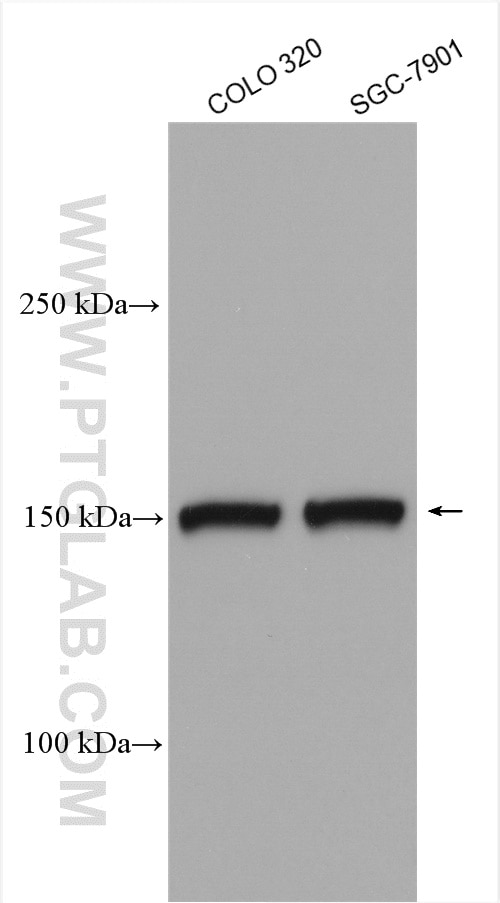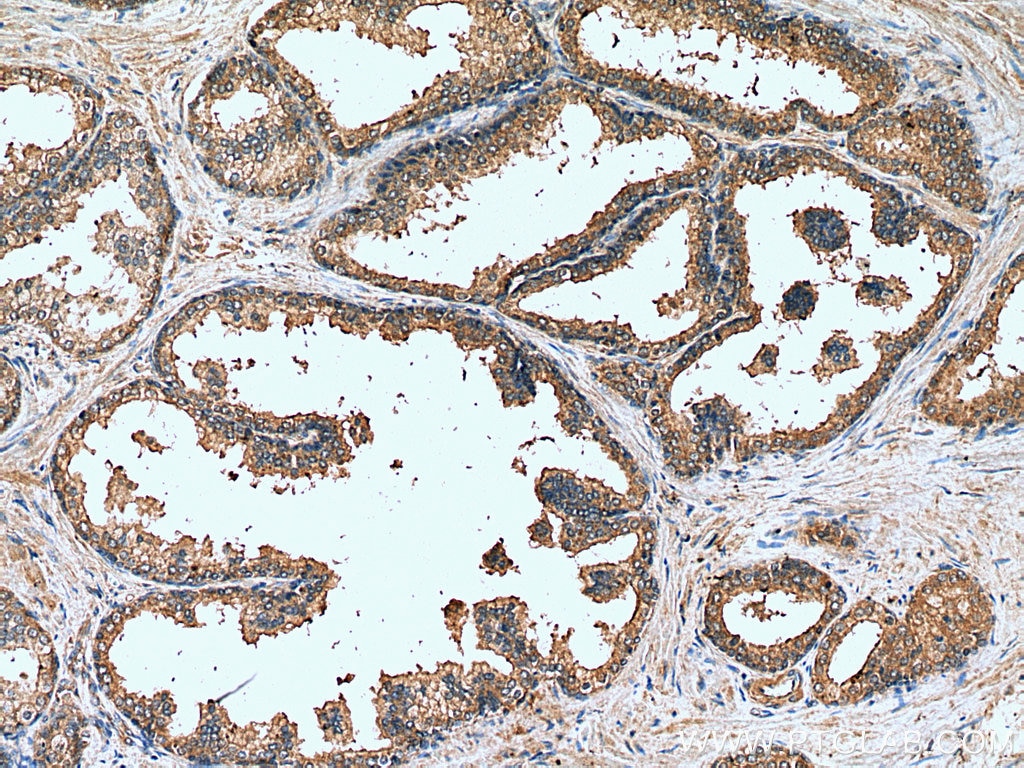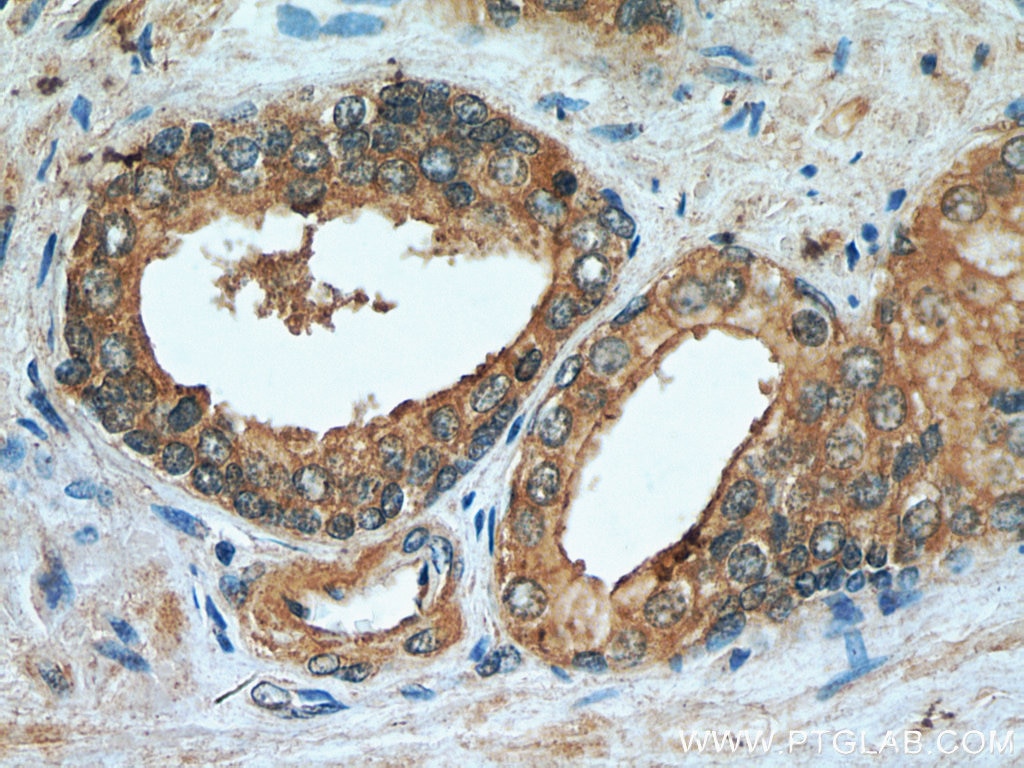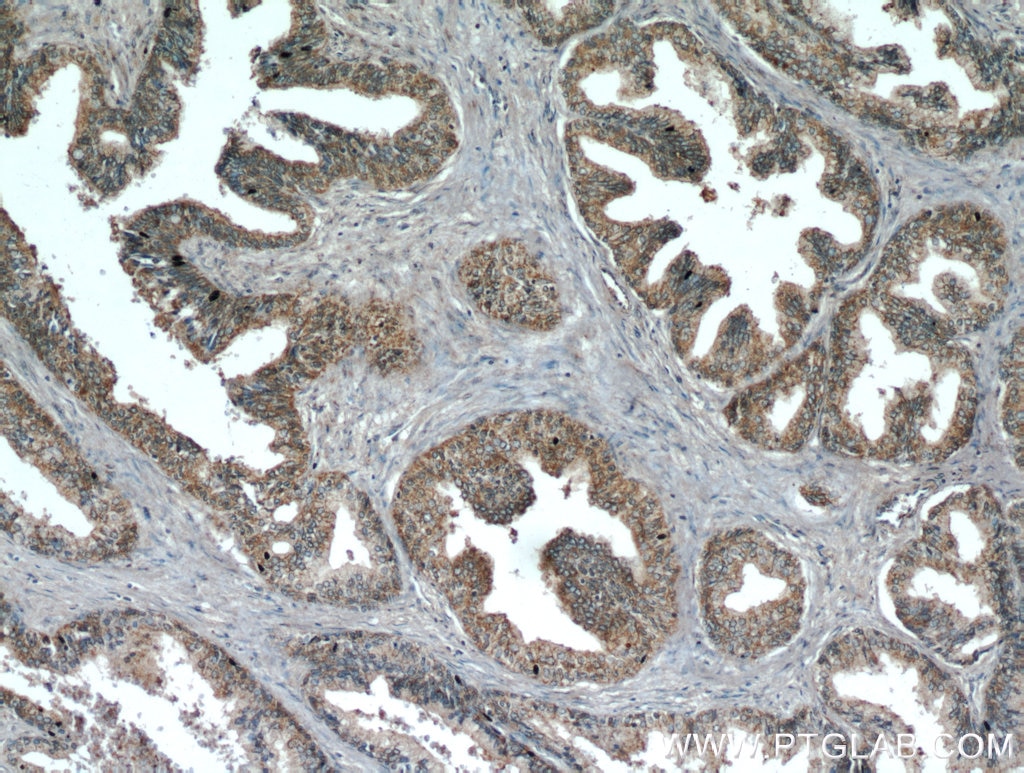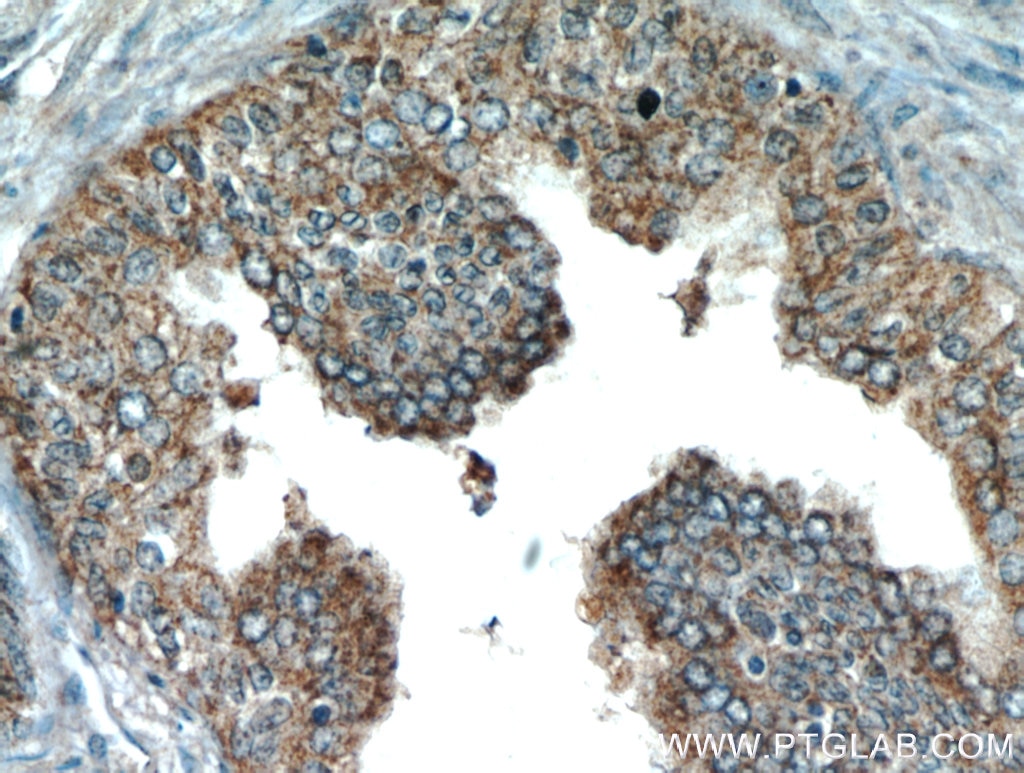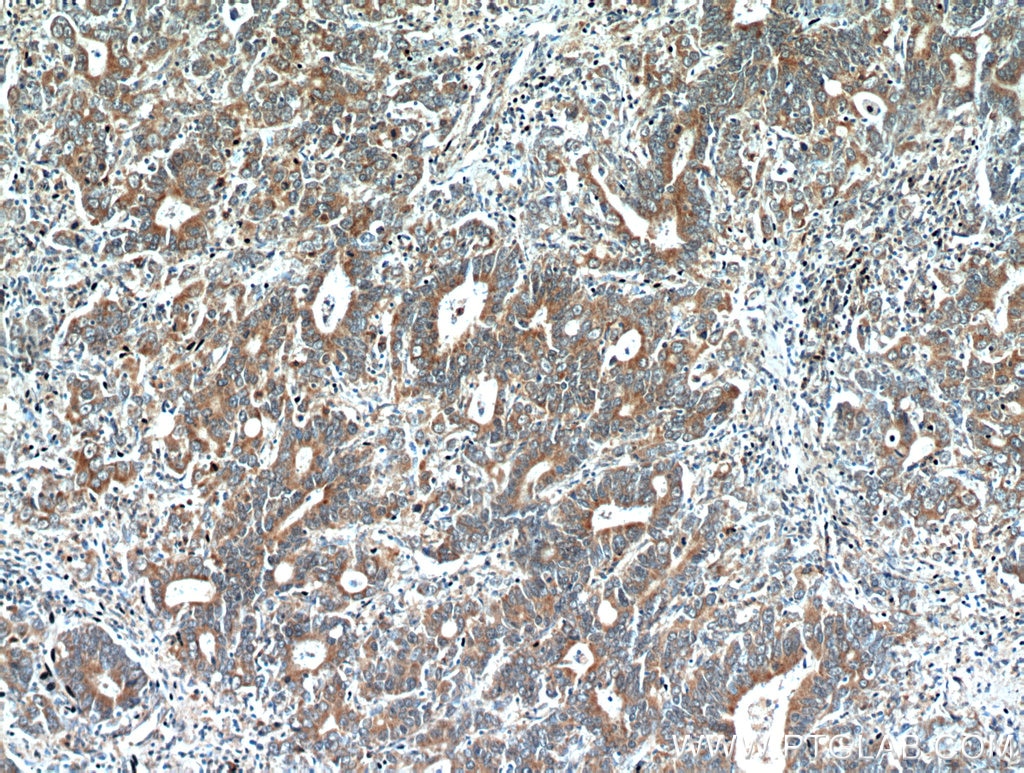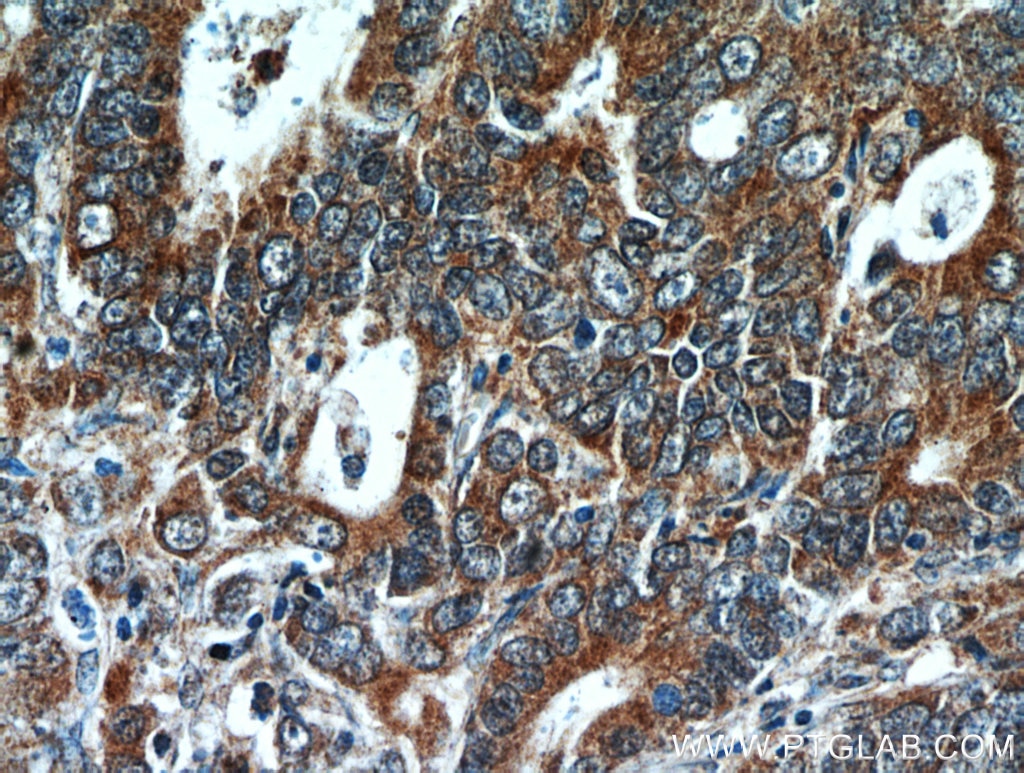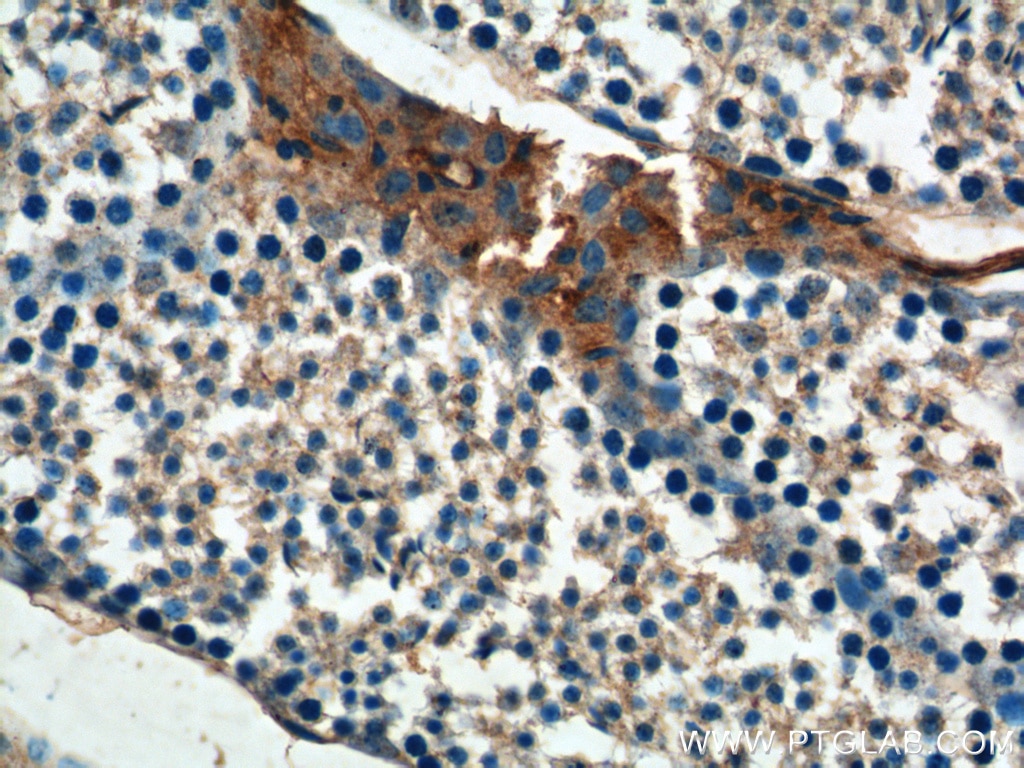- Phare
- Validé par KD/KO
Anticorps Polyclonal de lapin anti-KIAA1199 / CEMIP
KIAA1199 / CEMIP Polyclonal Antibody for WB, IHC, IF/ICC, FC (Intra), ELISA
Hôte / Isotype
Lapin / IgG
Réactivité testée
Humain, souris et plus (1)
Applications
WB, IHC, IF/ICC, FC (Intra), IP, CoIP, ELISA
Conjugaison
Non conjugué
N° de cat : 21129-1-AP
Synonymes
Galerie de données de validation
Applications testées
| Résultats positifs en WB | cellules MG U-87, cellules COLO 320, cellules SGC-7901, cellules U2OS |
| Résultats positifs en IHC | tissu d'hyperplasie de la prostate humain, tissu de cancer de l'estomac humain, tissu testiculaire de souris il est suggéré de démasquer l'antigène avec un tampon de TE buffer pH 9.0; (*) À défaut, 'le démasquage de l'antigène peut être 'effectué avec un tampon citrate pH 6,0. |
| Résultats positifs en IF/ICC | cellules HeLa, |
| Résultats positifs en FC (Intra) | cellules HepG2, |
Dilution recommandée
| Application | Dilution |
|---|---|
| Western Blot (WB) | WB : 1:300-1:1000 |
| Immunohistochimie (IHC) | IHC : 1:50-1:500 |
| Immunofluorescence (IF)/ICC | IF/ICC : 1:50-1:500 |
| Flow Cytometry (FC) (INTRA) | FC (INTRA) : 0.40 ug per 10^6 cells in a 100 µl suspension |
| It is recommended that this reagent should be titrated in each testing system to obtain optimal results. | |
| Sample-dependent, check data in validation data gallery | |
Applications publiées
| KD/KO | See 18 publications below |
| WB | See 34 publications below |
| IHC | See 29 publications below |
| IF | See 9 publications below |
| IP | See 2 publications below |
| CoIP | See 2 publications below |
Informations sur le produit
21129-1-AP cible KIAA1199 / CEMIP dans les applications de WB, IHC, IF/ICC, FC (Intra), IP, CoIP, ELISA et montre une réactivité avec des échantillons Humain, souris
| Réactivité | Humain, souris |
| Réactivité citée | rat, Humain, souris |
| Hôte / Isotype | Lapin / IgG |
| Clonalité | Polyclonal |
| Type | Anticorps |
| Immunogène | KIAA1199 / CEMIP Protéine recombinante Ag15527 |
| Nom complet | KIAA1199 / CEMIP |
| Masse moléculaire calculée | 1361 aa, 153 kDa |
| Poids moléculaire observé | 150 kDa |
| Numéro d’acquisition GenBank | BC020256 |
| Symbole du gène | KIAA1199 |
| Identification du gène (NCBI) | 57214 |
| Conjugaison | Non conjugué |
| Forme | Liquide |
| Méthode de purification | Purification par affinité contre l'antigène |
| Tampon de stockage | PBS with 0.02% sodium azide and 50% glycerol |
| Conditions de stockage | Stocker à -20°C. Stable pendant un an après l'expédition. L'aliquotage n'est pas nécessaire pour le stockage à -20oC Les 20ul contiennent 0,1% de BSA. |
Informations générales
KIAA1199, also known as CEMIP, was first discovered as an inner-ear protein whose genetic mutations were linked to nonsyndromic hearing loss. KIAA1199 is involved in hyaluronan degradation. Studies have shown that KIAA1199 is overexpressed in many types of cancers, suggesting a critical role of KIAA1199 in cancer progression.
Protocole
| Product Specific Protocols | |
|---|---|
| WB protocol for KIAA1199 / CEMIP antibody 21129-1-AP | Download protocol |
| IHC protocol for KIAA1199 / CEMIP antibody 21129-1-AP | Download protocol |
| IF protocol for KIAA1199 / CEMIP antibody 21129-1-AP | Download protocol |
| Standard Protocols | |
|---|---|
| Click here to view our Standard Protocols |
Publications
| Species | Application | Title |
|---|---|---|
Nat Commun TREX tetramer disruption alters RNA processing necessary for corticogenesis in THOC6 Intellectual Disability Syndrome | ||
Sci Adv Single-cell analysis of human basal cell carcinoma reveals novel regulators of tumor growth and the tumor microenvironment. | ||
Am J Hum Genet Altered regulation of DPF3, a member of the SWI/SNF complexes, underlies the 14q24 renal cancer susceptibility locus.
| ||
Theranostics Functional Genomic mRNA Profiling of Colorectal Adenomas: Identification and in vivo Validation of CD44 and Splice Variant CD44v6 as Molecular Imaging Targets. | ||
Acta Pharmacol Sin Adaptor protein CEMIP reduces the chemosensitivity of small cell lung cancer via activation of an SRC-YAP oncogenic module
| ||
Cell Rep Cochlear Cell Modeling Using Disease-Specific iPSCs Unveils a Degenerative Phenotype and Suggests Treatments for Congenital Progressive Hearing Loss. |
Avis
The reviews below have been submitted by verified Proteintech customers who received an incentive for providing their feedback.
FH DAN (Verified Customer) (06-10-2022) |
|
